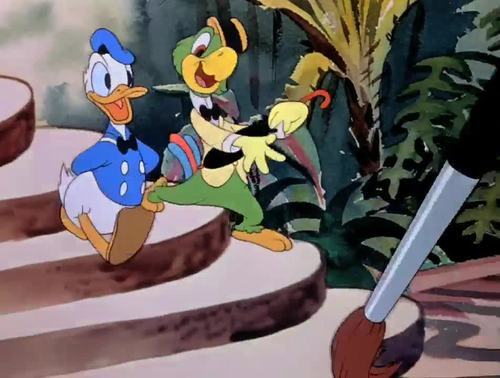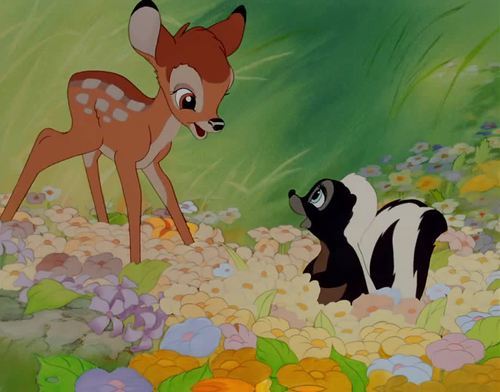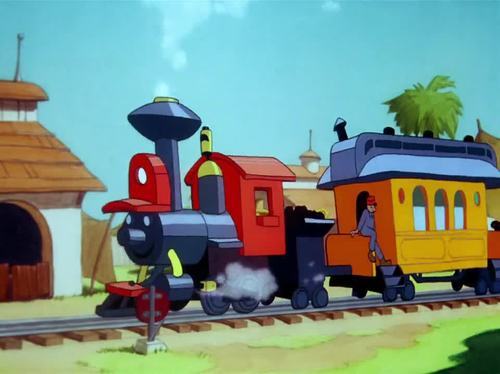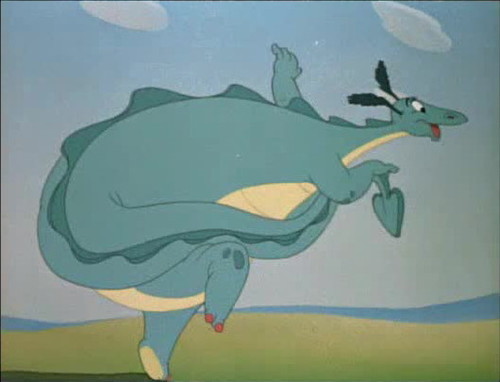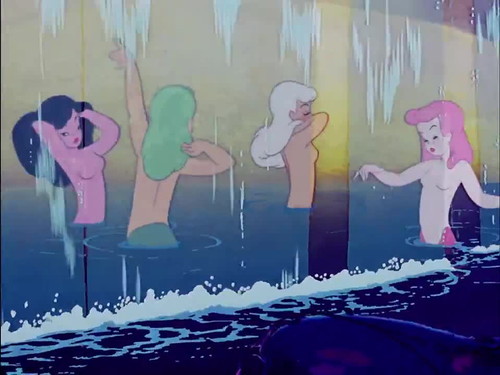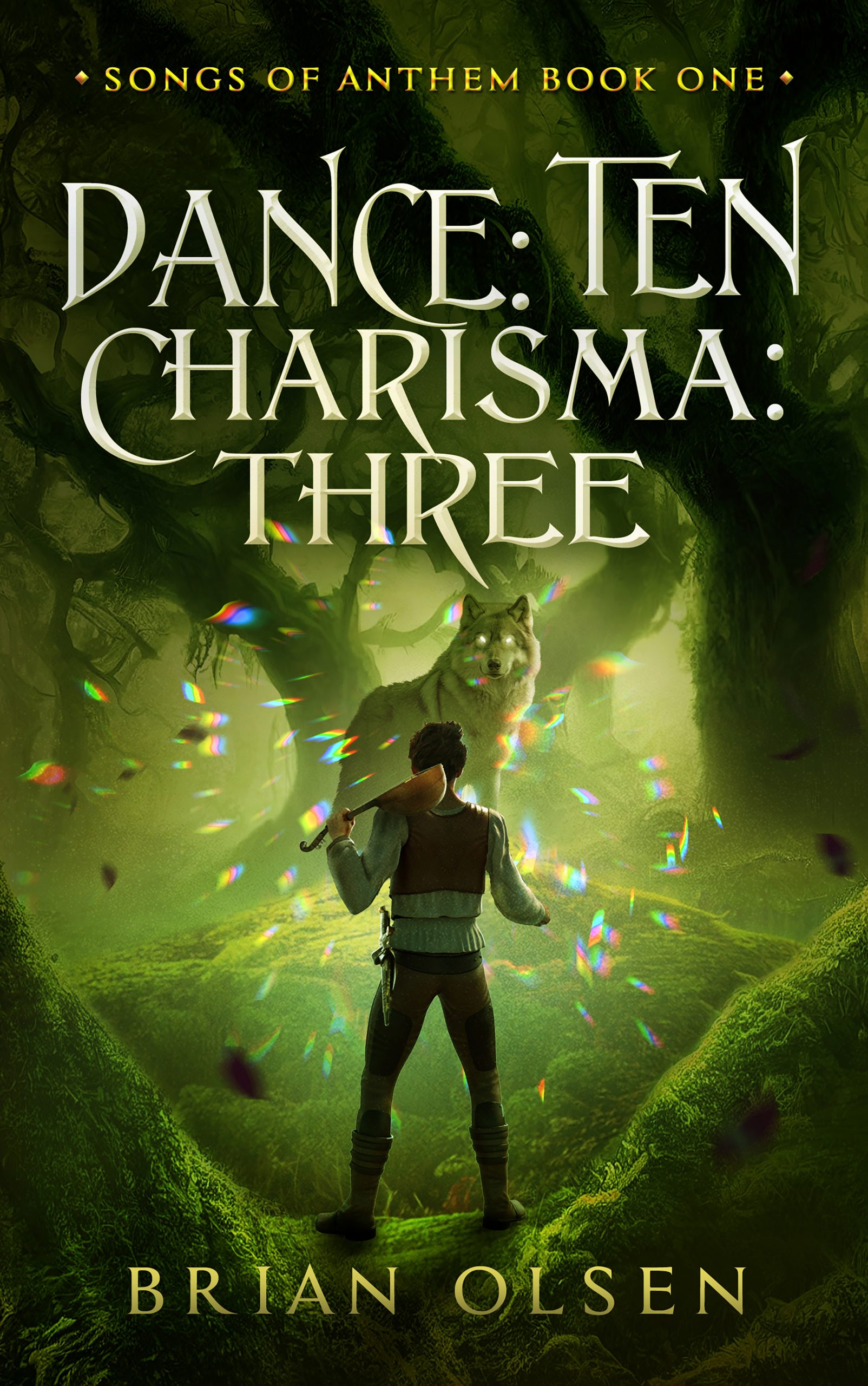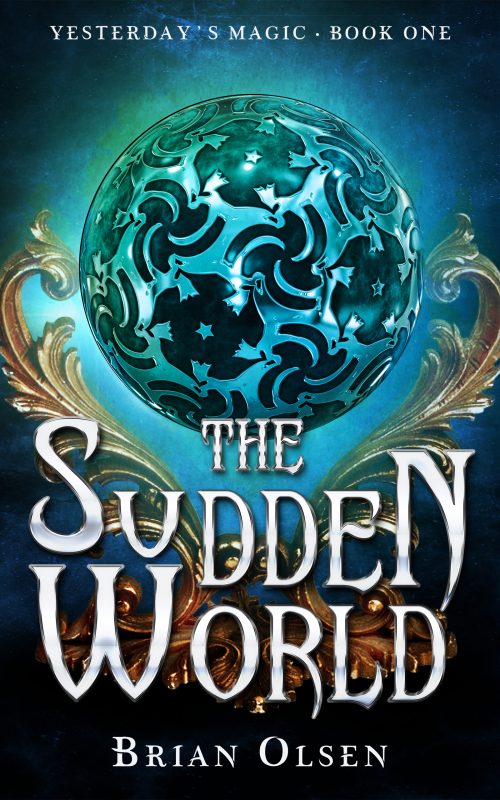Saludos Amigos (1942) was Disney’s first “package film” – a feature made up of individual shorts. I had never seen this movie before – I had never even heard of it. Which, as it turns out, is kind of a shame…
- There are four animated shorts in this movie, linked by a live-action travelogue about Disney artists touring South America for inspiration. They were actually on a goodwill tour commissioned by the State Department to counter some of the influence of Nazi Germany on Latin American countries, because Disney cartoons were very popular there. That last part isn’t mentioned in the movie, which is a shame because it’s kind of bad-ass. Walt Disney vs. the Nazis. That’s a bio-pic waiting to happen.
- The first short shows us Donald Duck visiting Lake Titicaca and the nearby town, and everything is quaint and exotic and primitive and hoo boy is it 1942. It’s funny, though. I mean, it’s Donald Duck getting mad and there’s a snooty llama. How can it not be funny?
- The second short is Pedro, about a baby plane on his first flight, picking up the mail from Mendoza, Argentina, and bringing it home to Santiago, Chile. It’s adorable. Who’s a cute widdle baby plane? You are, Pedro! Yes, you are!
- The animators keep forgetting that Pedro is carrying the mail bag. It vanishes and reappears from scene to scene. Seeing as how the whole cartoon is about Pedro delivering the mail, that’s kind of an important plot element to neglect to draw.
- A lot of the non-anthropomorphic animals in Disney shorts act as either the straight man or the antagonist to the main character. In the third short, El Gaucho Goofy, Goofy’s horse is just as ridiculous as he is, and it works very well.
- El Gaucho Goofy ends with Goofy saying “Hasta la vista” and for a second I forget what year it is and I’m sure he’s going to end it with “baby” but then he doesn’t. Obviously.
- There are live action shots of the carnival in Rio, and there’s not a single drag queen to be seen. I don’t care if it is 1942, I don’t buy it.
- The final short is Aquarela de Brasil (Watercolor of Brazil) and it’s gorgeous, particularly the opening sequence where a paint brush creates the Brazilian rain forest. Even though they’re twenty years apart, and one is Latin American themed and the other Polynesian, I was reminded of the Enchanted Tiki Room – I wonder if there was some inspiration drawn from here. This short marks the first appearance ever of José Carioca, the cigar smoking parrot. José would go on to be hugely popular in Brazil, starring in his own series of Disney comics. He likes to get boozy, so I’m a fan.
- Blink and you miss it, but just before the last sequence the paint brush drains the bottle of cachaça that Donald just got hammered on and uses the strong alcoholic liquid as its paint for the final samba scene. Brilliant.
- If you can put up the theme park history tour, the shorts in this flick are pretty great. Don’t expect a movie, expect a couple of fun cartoons. It’s worth a watch.
